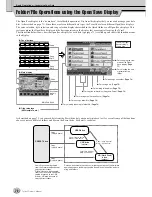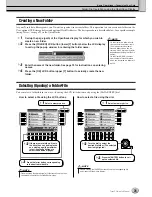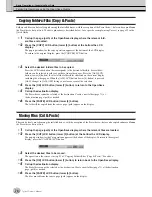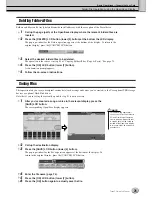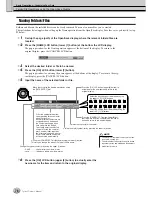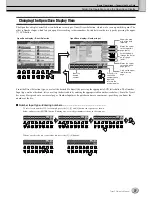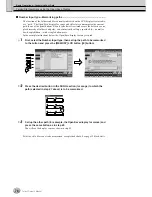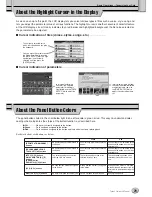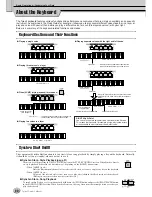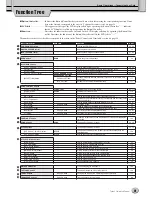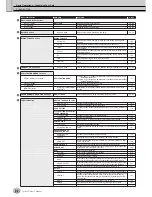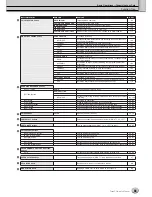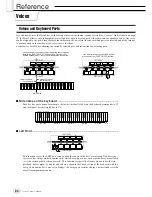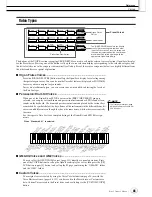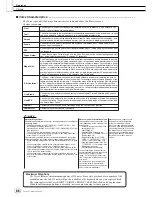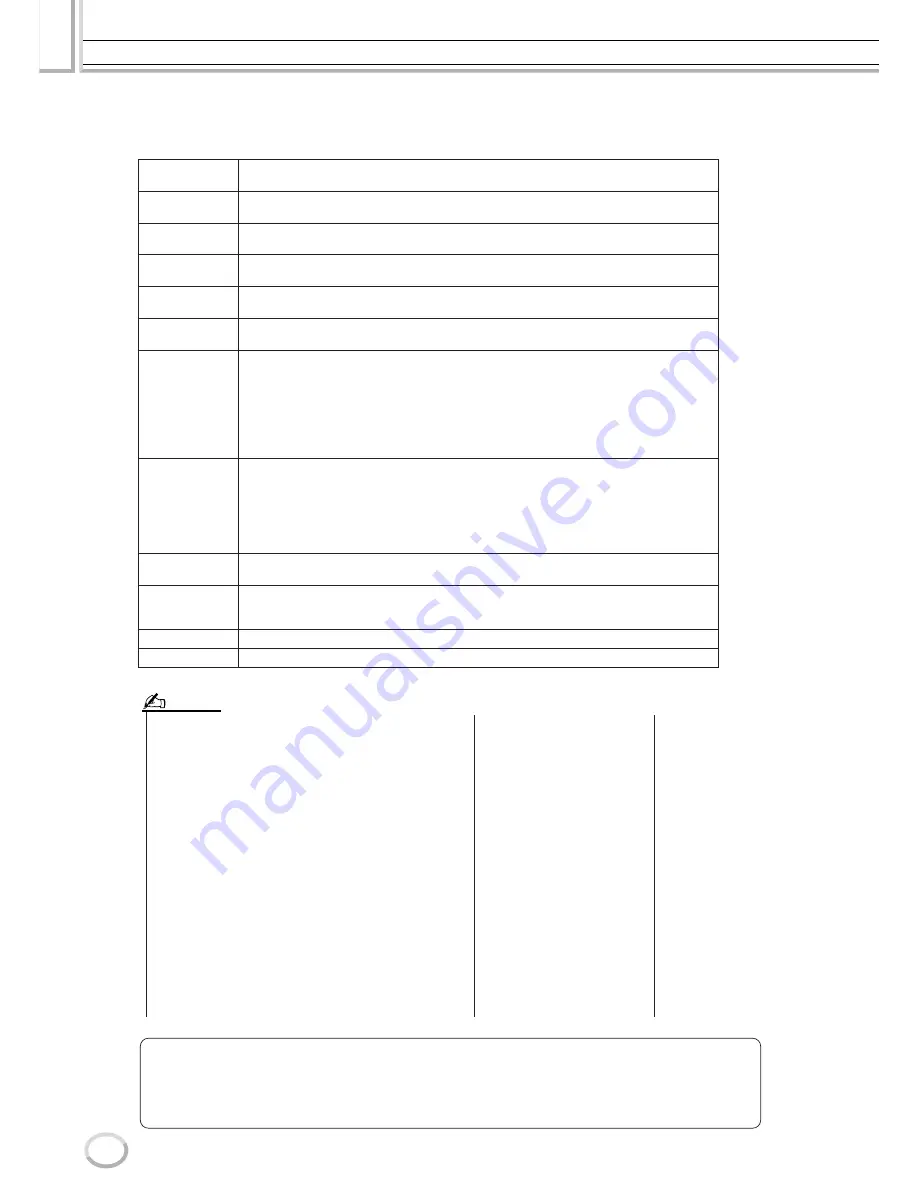
Voices
Reference
86
Tyros2 Owner’s Manual
■
Voice Characteristics
.......................................................................................................................................
The Voice type and its defining characteristics are indicated above the Preset voice or
Custom voice name.
Live!
These acoustic instrument sounds were sampled in stereo, to produce a truly authentic, rich
sound—full of atmosphere and ambience.
Cool!
These Voices capture the dynamic textures and subtle nuances of electric instruments—thanks
to a huge amount of memory and some very sophisticated programming.
Sweet!
These acoustic instrument sounds also benefit from Yamaha’s sophisticated technology—and
feature a sound so finely detailed and natural, you’ll swear you’re playing the real thing!
Drums
Various drum and percussion sounds are assigned to individual keys, letting you play the
sounds from the keyboard.
SFX
Various special effect sounds are assigned to individual keys, letting you play the sounds from
the keyboard.
Organ Flutes!
This authentic organ Voice lets you use the Voice Set to adjust the various footages and craft
your own original organ sounds. See page 97 for details.
MegaVoice
The MegaVoices are not intended to be played from the keyboard but are designed to be used
with recorded MIDI data (including songs and styles). MegaVoices make special use of velocity
switching, with completely different sounds in the various velocity ranges. For example, a guitar
MegaVoice has a huge variety of specific performance techniques assigned to different velocity
ranges—making the voice difficult to “play” in real time (because of the precise velocities need-
ed), but very useful when creating realistic tracks with MIDI data, especially when you want to
avoid using several different voices just to make a single instrumental part. Sound maps for the
Tyros2’s Megavoices are given in the separate Data List booklet.
S. Articulation!
The Super Articulation voices sound remarkably authentic and natural, featuring the unique
performance characteristics of each instrument—for example, guitar scratching sounds or the
legato phrasing of wind instruments. They provide many of the same benefits as the MegaVoic-
es, but with greater playability and expressive control in real time. To effectively play these
natural sounds in performance of certain voices, you may need to use the pitch bend wheel or
footswitch. For details on how to best play each voice, call up the Information window (pressing
the upper [6] button in the voice’s Open/Save display).
Live!Drums
These are high-quality drum sounds taking full advantage of Stereo Sampling and Dynamic
Sampling.
Live!SFX
These are high-quality Latin percussion sounds taking full advantage of Stereo Sampling and
Dynamic sampling. They give you a broader and more versatile range of Latin percussion than
the normal drum Voices.
Custom!
Custom voices which you have created by using the Custom voice function.
CustomWA!
Custom voices which contain Wave data.
Notes for MegaVoices:
Unexpected or undesired sounds may result depending on the settings or
conditions below:
• Initial Touch setting in the [FUNCTION]
→
CONTROLLER
→
KEY-
BOARD/PANEL display (page 191)
• Harmony/Echo settings in the [FUNCTION]
→
HARMONY/ECHO dis-
play (page 191)
• Touch sensitivity-related settings in the Voice Set (page 91)
• Playing keys in the left-hand Chord sections when Stop Accompani-
ment (page 157) is set to “STYLE.”
Unexpected or undesired sounds may result depending on the settings
below, when editing or creating data for songs, styles, and Multi Pads:
• When selecting a MegaVoice from the Revoice display of a style (page
37).
• When changing the velocity values of several notes at once in the
Event List displays of song, style, or Multi Pad (page 127).
• When changing the velocity values of several notes at once with the
Velocity Change function (page 165) and the Dynamics function (page
163) in the Style Creator function.
• When changing the note numbers of several specified channels at
once with the Channel Transpose function (page 124) in the Song Cre-
ator function.
Notes for Super Articulation voices:
Unexpected or undesired sounds may
result depending on the setting or con-
ditions below:
• Using Performance Assistant Tech-
nology (page 120)
• Mono (page 87)
• Harmony/Echo settings in the
[FUNCTION]
→
HARMONY-ECHO
display (page 191)
• Sostenuto setting in the [FUNC-
TION]
→
CONTROLLER
→
FOOT-
PEDAL
→
Sostenuto (page 190)
• Pitch to Note parameter in the [VH
TYPE SELECT]
→
Parameter in the
Edit display (page 48)
• Re-recorded or edited songs
When changing the note numbers of
several specified channels at once with
the Channel Transpose function
(page 124) in the Song Creator func-
tion, unexpected or undesired sounds
may result.
On some voices, the playing of trills
causes the voice to automatically
sound monophonically, even when the
voice is normally polyphonic.
MegaVoices and Super Articula-
tion voices are only compatible
with other models which have
those two types of voices installed.
Any song, style or Multi Pads data
you’ve created on the Tyros2 using
the MegaVoices or Super Articula-
tion voices will not sound properly
when played back on instruments
that do not have these types of
voices.
NOTE
Maximum Polyphony
The Tyros2 features a maximum polyphony of 128 notes. Since style playback uses a number of the
available notes, the full 128 notes will not be available on the keyboard when a style is played back.
The same applies to the Voice RIGHT 1, RIGHT 2, RIGHT 3, LEFT, Multi Pad, and Song functions.
When the maximum polyphony is exceeded, notes are played using last-note priority.
Содержание 2
Страница 1: ...Owner s Manual EN ...
Страница 236: ...Tyros2 Owner s Manual ...

